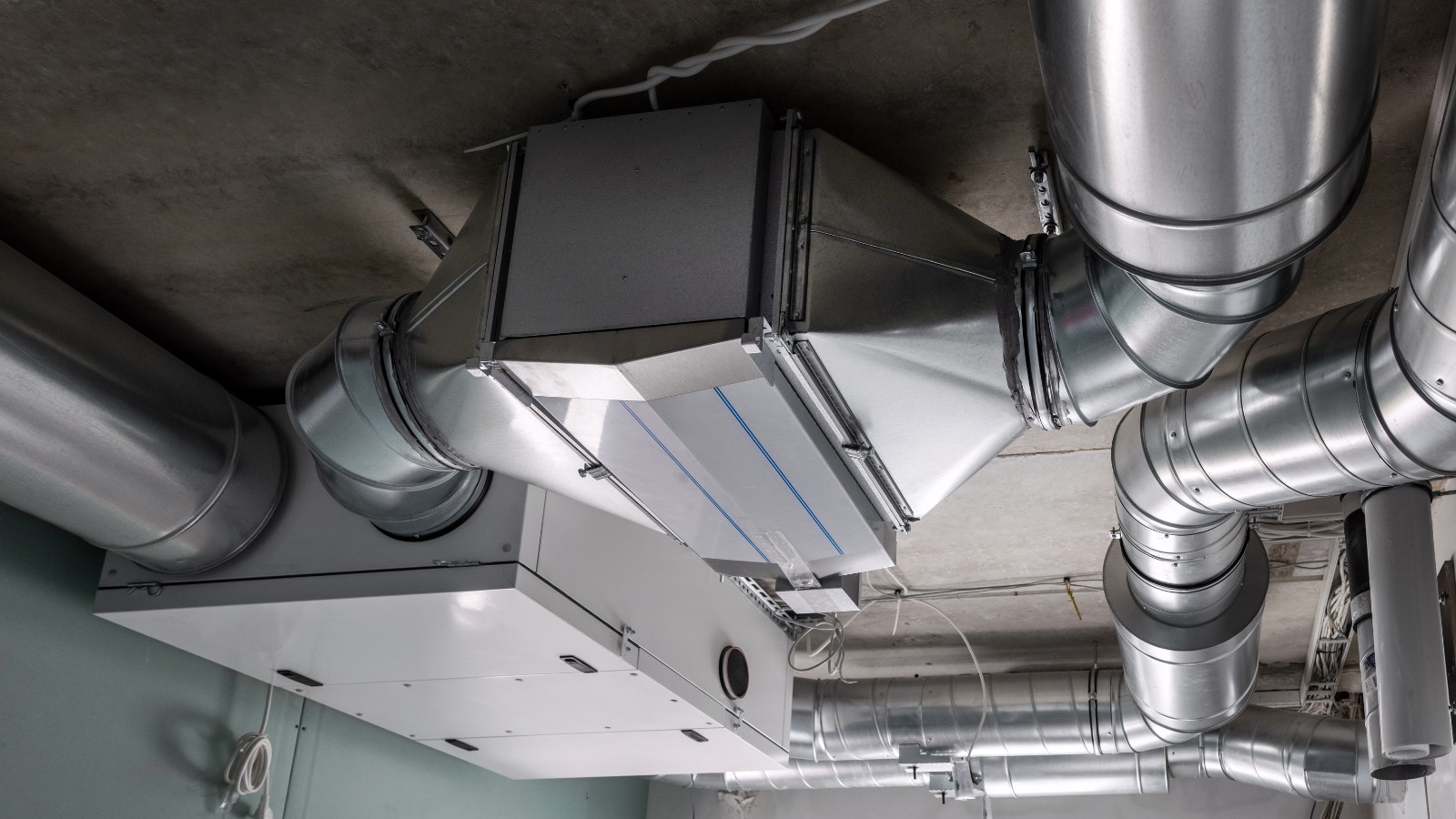



As energy efficiency standards rise globally, retrofitting existing commercial buildings has become a primary strategy to reduce energy consumption, increase comfort, and lower operating costs. In Ireland, a significant portion of commercial properties were constructed before modern energy efficiency standards were established. Up until recently the solution was to demolish the building and start all over again. However, more recently the more most favourable and greener approach is to retain the existing structure and retrofit the building to bring it up to modern standards.
Retrofitting can involve many elements: from upgrading insulation and windows to optimising heating, ventilation, and air conditioning (HVAC) systems. In this context, Mechanical Ventilation with Heat Recovery (MVHR) is an effective solution that can enhance energy efficiency while improving indoor air quality. An MVHR system extracts stale indoor air, recovers the heat, and replaces it with fresh, filtered air, creating an energy-efficient cycle of ventilation that supports healthier and more comfortable indoor environments.
For many commercial buildings, traditional ventilation systems may not meet modern standards for indoor air quality. Retrofitting these systems with MVHR technology provides a way to bring these buildings up to modern standards, providing reliable ventilation that reduces both energy costs and carbon footprint.
1. Enhanced Air Quality
Indoor air quality (IAQ) is a critical factor in maintaining a healthy workspace, and MVHR systems are designed to ensure a continuous supply of fresh air, filtering out pollutants and allergens. This is especially important in commercial settings where occupants spend significant hours indoors. Good air quality supports employee well-being and productivity, while also reducing the risks associated with poor ventilation, such as respiratory issues or allergies.
2. Protecting Building Fabric
Poor ventilation can lead to a range of issues, including dampness and structural damage. MVHR systems help prevent such deterioration by carefully controlling moisture levels. This protection is particularly important in Ireland’s humid climate, as unmanaged moisture can lead to condensation and mold, which ultimately weakens the building structure over time.
3. Condensation Control
Ireland’s commercial buildings, particularly those without effective ventilation systems, often suffer from condensation issues. MVHR systems tackle this problem head-on by maintaining a balanced environment where the humidity levels are controlled, thus reducing condensation. This not only benefits the building fabric but also creates a more comfortable environment for occupants.
4. Overheating Control
MVHR systems can help limit overheating during warmer months by utilising a summer bypass function. This feature allows the system to divert warm, stale indoor air directly outside without transferring heat to the incoming fresh air, effectively “bypassing” the heat recovery process. Instead of warming the fresh incoming air, the bypass function supplies cooler outside air into the building, helping to regulate indoor temperatures and prevent overheating. This is especially effective at night time when the cooler outdoor temperatures can be used to cool the building fabric that has been heated throughout a Summer’s day.

As energy efficiency standards rise globally, retrofitting existing commercial buildings has become a primary strategy to reduce energy consumption, increase comfort, and lower operating costs. In Ireland, a significant portion of commercial properties were constructed before modern energy efficiency standards were established. Up until recently the solution was to demolish the building and start all over again. However, more recently the more most favourable and greener approach is to retain the existing structure and retrofit the building to bring it up to modern standards.
Retrofitting can involve many elements: from upgrading insulation and windows to optimising heating, ventilation, and air conditioning (HVAC) systems. In this context, Mechanical Ventilation with Heat Recovery (MVHR) is an effective solution that can enhance energy efficiency while improving indoor air quality. An MVHR system extracts stale indoor air, recovers the heat, and replaces it with fresh, filtered air, creating an energy-efficient cycle of ventilation that supports healthier and more comfortable indoor environments.
For many commercial buildings, traditional ventilation systems may not meet modern standards for indoor air quality. Retrofitting these systems with MVHR technology provides a way to bring these buildings up to modern standards, providing reliable ventilation that reduces both energy costs and carbon footprint.
1. Enhanced Air Quality
Indoor air quality (IAQ) is a critical factor in maintaining a healthy workspace, and MVHR systems are designed to ensure a continuous supply of fresh air, filtering out pollutants and allergens. This is especially important in commercial settings where occupants spend significant hours indoors. Good air quality supports employee well-being and productivity, while also reducing the risks associated with poor ventilation, such as respiratory issues or allergies.
2. Protecting Building Fabric
Poor ventilation can lead to a range of issues, including dampness and structural damage. MVHR systems help prevent such deterioration by carefully controlling moisture levels. This protection is particularly important in Ireland’s humid climate, as unmanaged moisture can lead to condensation and mold, which ultimately weakens the building structure over time.
3. Condensation Control
Ireland’s commercial buildings, particularly those without effective ventilation systems, often suffer from condensation issues. MVHR systems tackle this problem head-on by maintaining a balanced environment where the humidity levels are controlled, thus reducing condensation. This not only benefits the building fabric but also creates a more comfortable environment for occupants.
4. Overheating Control
MVHR systems can help limit overheating during warmer months by utilising a summer bypass function. This feature allows the system to divert warm, stale indoor air directly outside without transferring heat to the incoming fresh air, effectively “bypassing” the heat recovery process. Instead of warming the fresh incoming air, the bypass function supplies cooler outside air into the building, helping to regulate indoor temperatures and prevent overheating. This is especially effective at night time when the cooler outdoor temperatures can be used to cool the building fabric that has been heated throughout a Summer’s day.